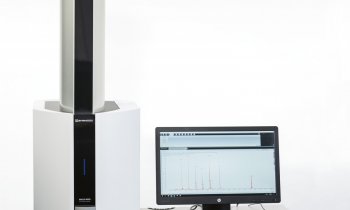Aspergillus
ESCMID cautions that Europe is now a hotbed of global fungal resistance
ESCMID Fungal Infection Study Group (EFISG) argues that fungal resistance now represents a huge healthcare threat – with many cases remaining massively undiagnosed even in the developed world – and that there is a rising prevalence of the most invasive and deadly forms. Conversely, in the developing world we are seeing very treatable fungal infections killing huge numbers – half a million deaths each year due to cryptococcal infections, making them the second-largest killer in Africa behind HIV. But if more antifungals and diagnostic procedures were made available, we could potentially reduce the mortality rate down from around 50% to 20% or even 10%.

The major problem in the developed world has been the reliance on fungicides in crop protection and the agricultural industry over the past three or four decades. Compounding this use is the fact that many of the newer fungicides are molecularly closely related to the human medicines that have been increasingly used since the turn of the 21st century. Thus, what has now emerged, particularly in Europe, has been an alarming rise in resistance. Already we are seeing azole resistance in Aspergillus fumigatus spreading across many countries. In contrast to antibiotic resistance however, azole resistance is far higher in Europe than the USA – as a result of less available land and greater pressures to maximize crop yields, leading to greater anti-fungicide usage.
Additionally, across the EU there are now some 250,000 cases each year of patients with chronic pulmonary aspergillosis (20,000 after cancer treatment) – and resistance rates continue to rise. It is in view of these shocking statistics that EFISG is calling for young clinicians, scientists and diagnosticians to join its global study group to help improve patient care, diagnostic methods and guidelines.
EFISG Chairman Prof. Andrew J. Ullmann from the Julius-Maximilians-University, Würzburg, commented: “Our role at ESCMID is to try and mitigate the spread of fungal resistance. For instance, three years ago we created the guidelines on Candida (used for example in the treatment of ICU patients), which has now received over 300 citations. But the world must do more to focus on this emerging problem, and more young scientists and clinicians are needed to help our research and improve best practice in clinical settings.”
Diagnostic procedures are still very poor, even in the developed world. As an example, there are study group autopsy reports showing that 30% of patients who had haematological malignancies also had a fungal disease – but only a quarter of these were diagnosed prior to death. EFISG explains it is therefore imperative that we develop good guidelines for industry professionals and seek to improve diagnostic procedures. The study group argues that we must also conduct ‘susceptibility testing’ ¬– in line with the work of EUCAST (European Committee on Antimicrobial Susceptibility Testing) – more available to help predict the most vulnerable patients, so that healthcare professionals can provide treatment and preventive measures earlier.
Prof. Maiken Cavling Arendrup, a member of EFISG who works at the Unit of Mycology and Parasitology, Department of Microbiological Surveillance and Research, Statens Serum Institute, Copenhagen, added: “We are really facing two different problems globally. In Europe we are seeing rising resistance as a casual effect of the use of crop protection products. Resistance is now spreading into human populations with deadly effect. To mitigate this we need to try and reduce this resistance at source and we must also have better diagnostics so we can detect and treat these infections earlier. In contrast, populations across Africa simply do not have access to adequate drugs to combat very treatable fungal infections. There are half a million deaths each year due to cryptococcal infection, and these rates would drop if they had better diagnostics and access to some basic drugs. Azole resistance has not received the publicity of antibiotic resistance, but the consequences of its effects will be not less severe.”
EFISG brings together Europe’s top clinicians, clinical microbiologists and researchers in invasive fungal infections to create a geographically dispersed critical mass of expertise to address questions of pharmacodynamics, genetic predisposition, optimal diagnostics, altering epidemiology, and combination therapy. ESCMID is also a keen supporter of the GAFFI (Global Action Fund for Fungal Infections) – a Geneva-based foundation that is seeking to reduce illness and death associated with fungal diseases worldwide through advocacy and fund raising alongside a number of implementing partners, including governments and both national and international global health agencies.
Fungal infections are neglected diseases worldwide. In total, there are now over 300 million people of all ages suffering from a serious fungal infection every year. Of these, over 1,350,000 people are estimated to die. In comparison, deaths from malaria and tuberculosis are 1,240,000 and 1,400,000 respectively.
Source: ESCMID
28.07.2015











